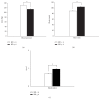Elevated Admission Base Deficit Is Associated with a Complex Dynamic Network of Systemic Inflammation Which Drives Clinical Trajectories in Blunt Trauma Patients
- PMID: 27974867
- PMCID: PMC5126463
- DOI: 10.1155/2016/7950374
Elevated Admission Base Deficit Is Associated with a Complex Dynamic Network of Systemic Inflammation Which Drives Clinical Trajectories in Blunt Trauma Patients
Abstract
We hypothesized that elevated base deficit (BD) ≥ 4 mEq/L upon admission could be associated with an altered inflammatory response, which in turn may impact differential clinical trajectories. Using clinical and biobank data from 472 blunt trauma survivors, 154 patients were identified after excluding patients who received prehospital IV fluids or had alcohol intoxication. From this subcohort, 84 patients had a BD ≥ 4 mEq/L and 70 patients with BD < 4 mEq/L. Three samples within the first 24 h were obtained from all patients and then daily up to day 7 after injury. Twenty-two cytokines and chemokines were assayed using Luminex™ and were analyzed using two-way ANOVA and dynamic network analysis (DyNA). Multiple mediators of the innate and lymphoid immune responses in the BD ≥ 4 group were elevated differentially upon admission and up to 16 h after injury. DyNA revealed a higher, sustained degree of interconnectivity of the inflammatory response in the BD ≥ 4 patients during the initial 16 h after injury. These results suggest that elevated admission BD is associated with differential immune/inflammatory pathways, which subsequently could predispose patients to follow a complicated clinical course.
Conflict of interest statement
The authors declare that they have no competing interests.
Figures






References
MeSH terms
Substances
Grants and funding
LinkOut - more resources
Full Text Sources
Other Literature Sources
Medical
Molecular Biology Databases

